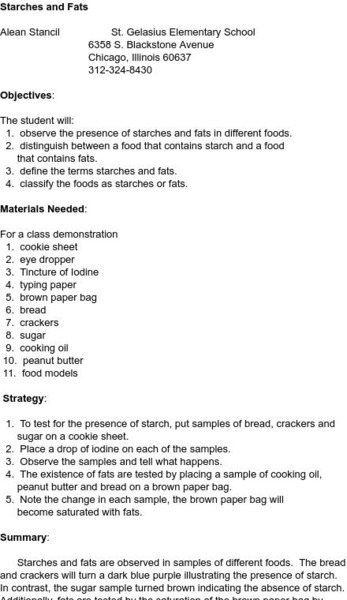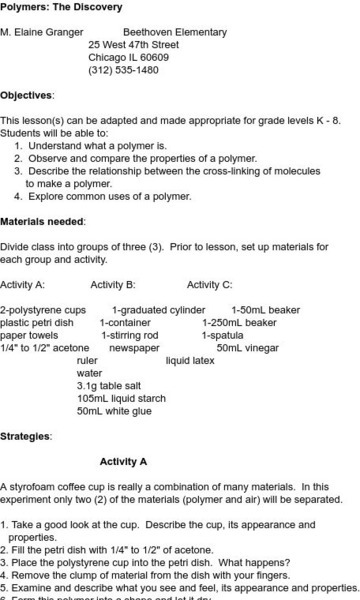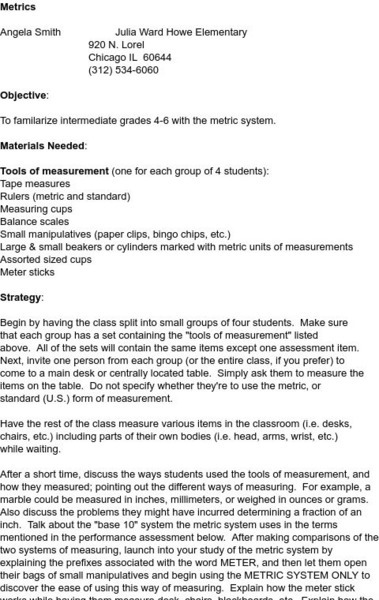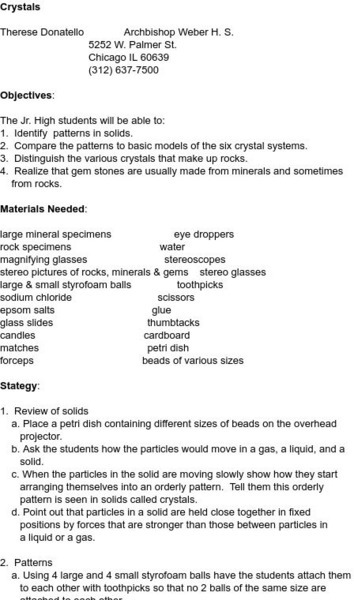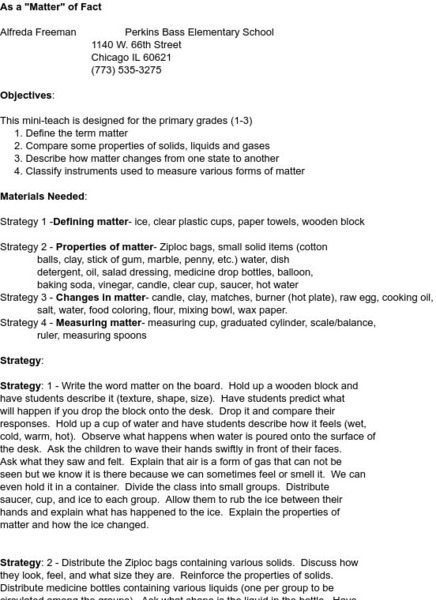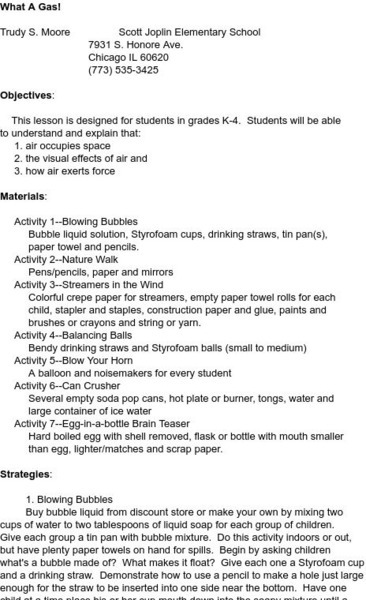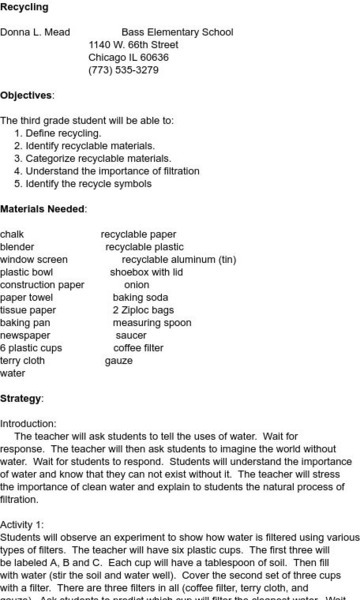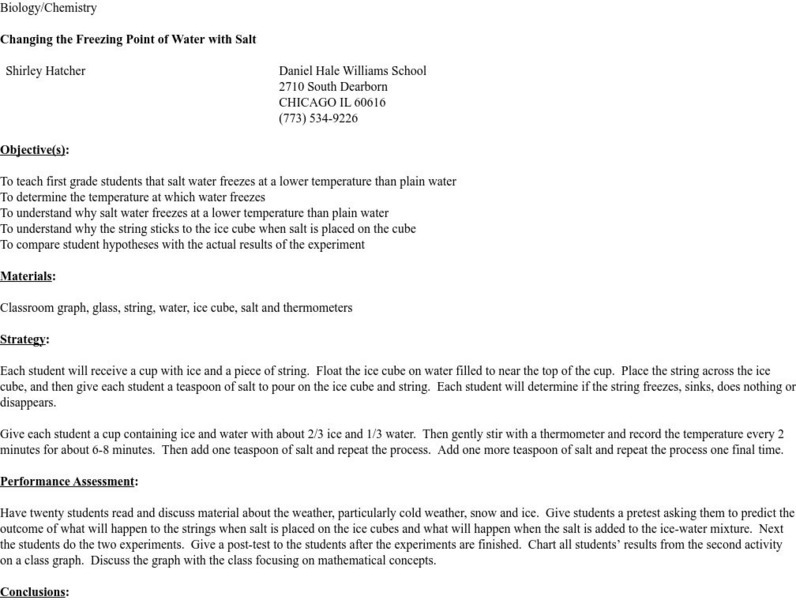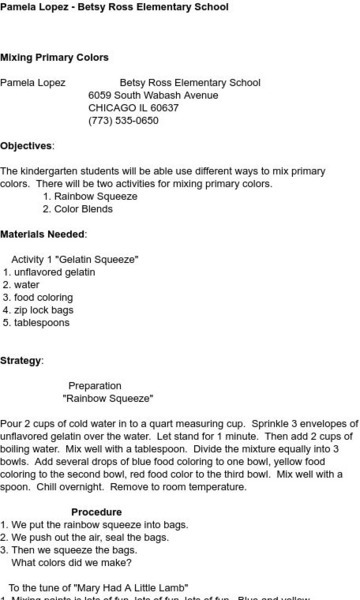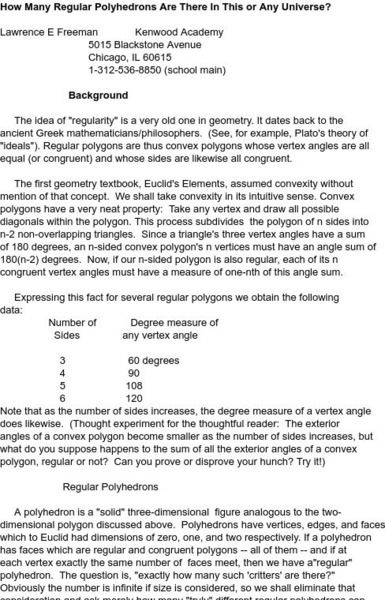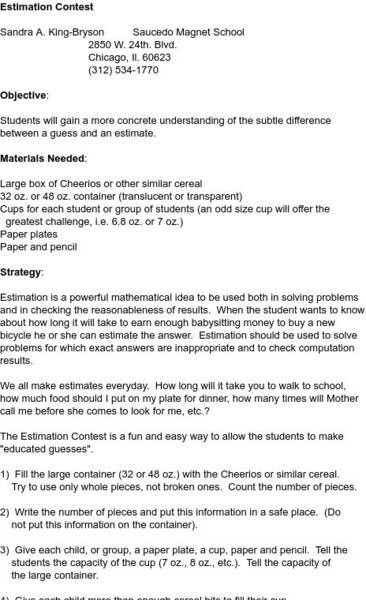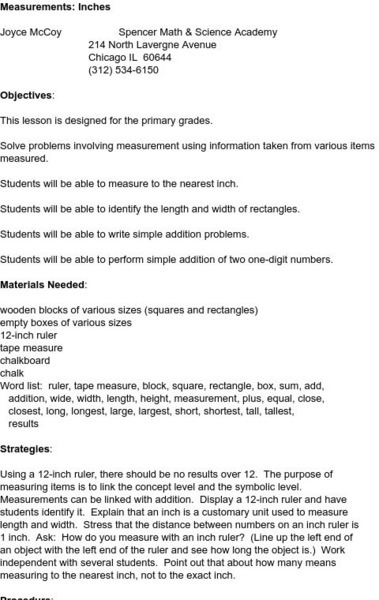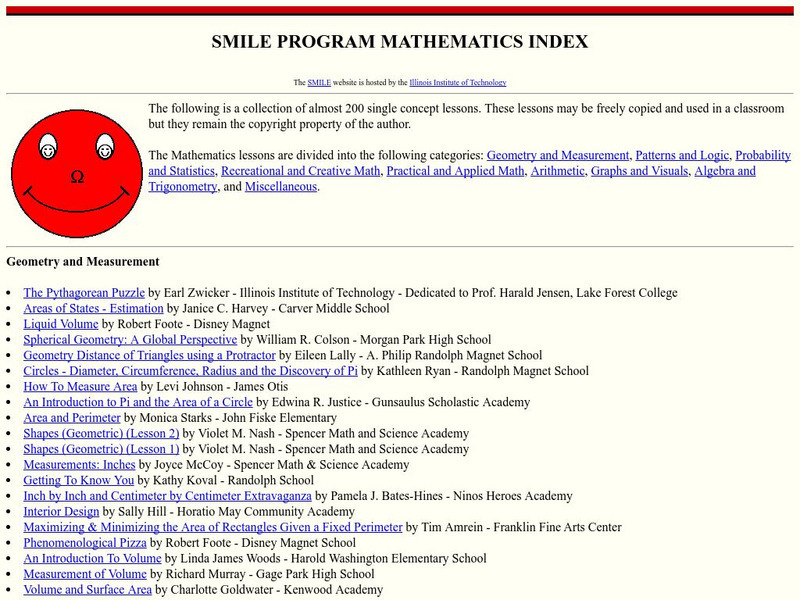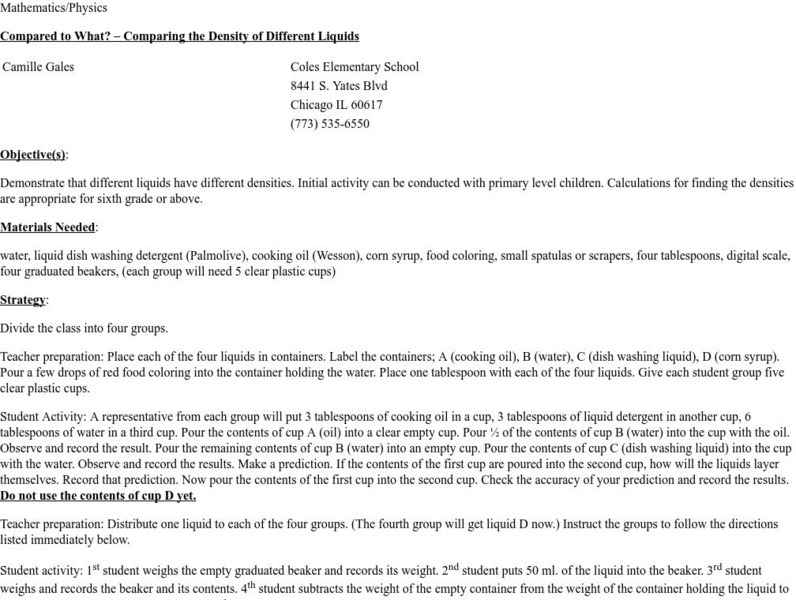Science and Mathematics Initiative for Learning Enhancement (SMILE)
Smile: Starches and Fats
In this healthy eating lesson plan, young scholars distinguish between a food that contains starch and a food that contains fats.
Science and Mathematics Initiative for Learning Enhancement (SMILE)
Smile: Polymers: The Discovery
A simple lab activity which introduces the field of polymer chemistry. Includes the use of polystyrene in a neat reaction.
Science and Mathematics Initiative for Learning Enhancement (SMILE)
Smile: Crystals I
From the Science and Mathematics Initiative for Learning Enhancement (SMILE) program. A lesson plan in which students explore the properties of crystals. Includes a variety off hands-on activities. Great for stimulating an idea for a...
Science and Mathematics Initiative for Learning Enhancement (SMILE)
Smile: Aspects of Weather
A detailed weather lesson plan written for the primary, intermediate, and junior high level. Topics covered are weather symbols, thermometer, graphing temperature results, clouds, moisture and air pressure.
Science and Mathematics Initiative for Learning Enhancement (SMILE)
Smile: Metric System
This lesson plan familiarizes pupils in grades 4-6 with using the metric system and performing conversions.
Science and Mathematics Initiative for Learning Enhancement (SMILE)
Smile: Crystals
From the Science and Mathematics Initiative for Learning Enhancement (SMILE) program. A lesson plan in which young scholars study and model crystal patterns, properties, and structures. Utilizes real samples of crystals and styrofoam balls.
Science and Mathematics Initiative for Learning Enhancement (SMILE)
Smile: Moles, Moles, Moles
This is an activity that is designed to introduce young scholars to the concept of the mole.
Science and Mathematics Initiative for Learning Enhancement (SMILE)
Smile: Weather
This lesson plan focuses on teaching students to distinguish among the evaporation, condensation,and precipitation phases of the water cycle.
Science and Mathematics Initiative for Learning Enhancement (SMILE)
Smile: As a "Matter" of Fact
In this lesson plan site, learners will define matter and compare properties of solids, liquids and gases.
Science and Mathematics Initiative for Learning Enhancement (SMILE)
Smile: What a Gas!
In this lesson plan, students will understand and explain that air occupies space, visual effects of air and how air exerts force.
Science and Mathematics Initiative for Learning Enhancement (SMILE)
Smile: Recycling
This lesson plan site focuses on defining recycling, identifying recyclable materials, categorizing recyclable materials, understanding the importance of filtration and identifying the recycle symbols.
Science and Mathematics Initiative for Learning Enhancement (SMILE)
Smile: Changing the Freezing Point of Water With Salt
This lesson plan teaches first grade students basic chemistry and physics principles--that saltwater freezes at a lower temperature that plain water.
Science and Mathematics Initiative for Learning Enhancement (SMILE)
Smile: Mixing Primary Colors
Primary elementary lesson plan about primary colors. One rainbow activity and one blending activity.
Science and Mathematics Initiative for Learning Enhancement (SMILE)
Smile: Somethin' Sweet
This site provides a lesson plan using candy making to demonstrate physical and chemical changes in matter. Includes directions to make caramel and rock candy.
Science and Mathematics Initiative for Learning Enhancement (SMILE)
Smile: Sample Science Fair Judging Forms
Two nice examples of documents you can use for judging science fair projects, one for judge registration, etc. and the other for actual project judging. This particular form comes from the Chicago public schools. Adapt it to your own...
Science and Mathematics Initiative for Learning Enhancement (SMILE)
Smile: Polyhedrons
This in-depth paper examines the idea of convexity. Euclid's Elements, the first geometry textbook, assumed convexity without mentioning the term.
Science and Mathematics Initiative for Learning Enhancement (SMILE)
Smile: Learning Ratios & Proportions Through Scale Drawings
Website which strengthens the conceptual connection between scale drawings and ratios through an activity activity.
Science and Mathematics Initiative for Learning Enhancement (SMILE)
Smile: Estimation Contest
A lesson plan that teaches the power of estimation and its uses, a distinction between estimation and guessing.
Science and Mathematics Initiative for Learning Enhancement (SMILE)
Smile: Geometry and the Geoboard
This site is a lesson plan for using a geoboard in a sixth grade geometry class. The lesson serves as an introduction to the geoboard and its uses in geometry. Some topics the lesson covers include helping to visualize shapes and and...
Science and Mathematics Initiative for Learning Enhancement (SMILE)
Smile: Lesson: An Introduction to Estimation and Measurements
Pancakes anyone? Pupils explore estimation and measurement by learning how to make pancakes. A hands-on lesson designed for students in grades 3-5 where pupils are engage in hand-on experiences involving measuring volume, converting...
Science and Mathematics Initiative for Learning Enhancement (SMILE)
Smile: Measurement Inches
This lesson plan for primary students gives students hands-on practice in using a ruler and understanding customary measurements, length and width in inches. Students also create simple one and two digit addition problems related to the...
Science and Mathematics Initiative for Learning Enhancement (SMILE)
Smile: Diameter,circumference,radius & the Discovery of Pi
This site provides a good project for students to use to explore the circumference of a circle.
Science and Mathematics Initiative for Learning Enhancement (SMILE)
Smile: Stats & Probability Lesson Plans
A collection of elementary lesson plans for the beginning study of statistics. These plans, written by educators, detail the materials needed for the instructional activity and the steps to be followed.
Science and Mathematics Initiative for Learning Enhancement (SMILE)
Smile: Comparing Liquid Density
Because different liquids have different properties, density also differs. In this lesson from the Illinois Institute of Technology, learners will calculate densities of water, dish-washing detergent, cooking oil, and other liquids.


